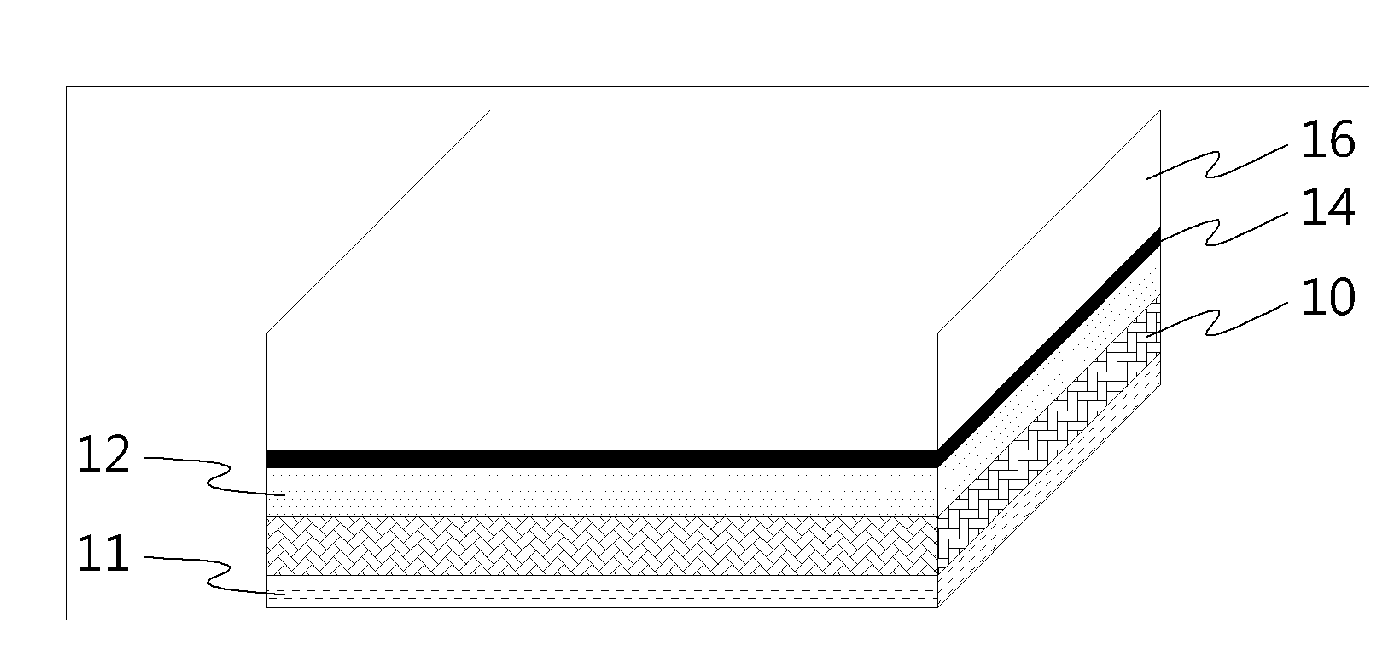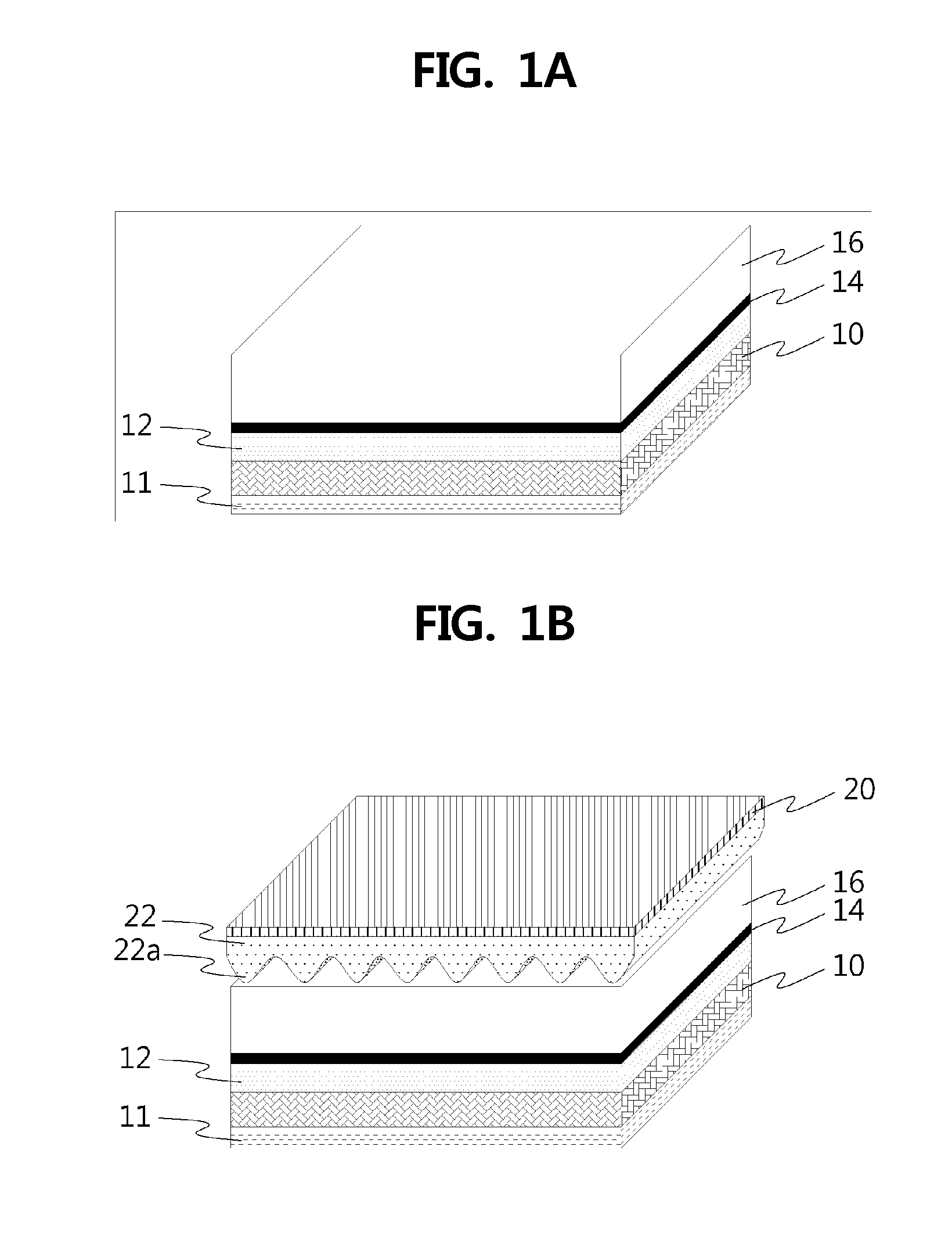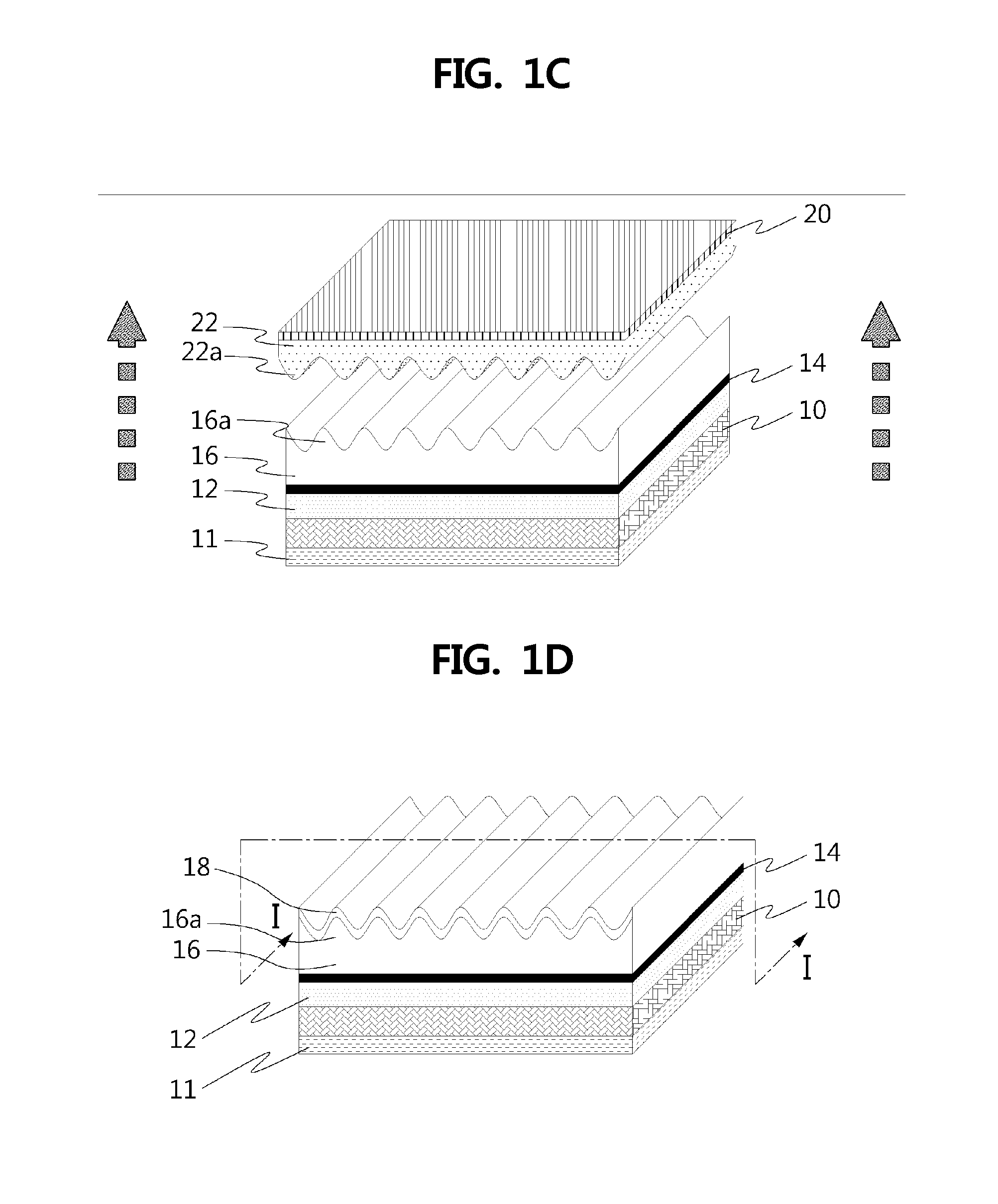Organic solar cell and method of fabricating the same
a solar cell and organic technology, applied in the field of solar cells, can solve the problems of increasing series resistance and not reaching a sufficient level, and achieve the effect of not increasing the thickness of an active layer and improving light absorption
- Summary
- Abstract
- Description
- Claims
- Application Information
AI Technical Summary
Benefits of technology
Problems solved by technology
Method used
Image
Examples
fabrication example 1
Fabrication of Elastomer Stamp
[0057]A surface relief grating was formed in a top surface of a photoisomerization polymer layer PDO3 using a 100 mW / cm2, 488 nm Argon laser. An elastomer stamp was formed using the PDO3 layer having the surface relief grating as a template. To be specific, the elastomer stamp was formed by pouring a polysiloxane acid prepolymer, which is a 10:1 (wt / wt) mixture of PDMS and a curing agent (Sylgard 184, Dow Corning) on the PDO3 layer having the surface relief grating, curing the polymer at 60□, and then separating the hardened polymer from the PDO3 layer.
fabrication example 2
Fabrication of Organic Solar Cell
[0058]A glass substrate (Samsung Corning) coated with a transparent electrode ITO having a sheet resistance of 10 Ω / sq or less was cleaned, and PEDOT:PSS (Baytron P VPAI 4083, H.C. Starck) was spin-coated to a thickness of 20 nm on the ITO layer. A mixture solution prepared by dissolving 30 mg P3HT (Rieke Metals) and 24 mg PCBM (Nano-C) in 2 ml chlorobenzene was spin-coated on the PEDOT:PSS layer to form an 80 nm organic active layer. The elastomer stamp fabricated in Fabrication Example 1 was conformally disposed on the organic active layer, and annealed for 20 minutes at 110□ in a nitrogen atmosphere, thereby forming an organic concave-convex pattern. After that, the elastomer stamp was separated, and a 20 nm calcium layer and a 100 nm aluminum layer were thermally deposited in sequence in a 10−6 torr vacuum, thereby forming a reflective electrode.
PUM
| Property | Measurement | Unit |
|---|---|---|
| transparent | aaaaa | aaaaa |
| surface relief grating | aaaaa | aaaaa |
| surface relief | aaaaa | aaaaa |
Abstract
Description
Claims
Application Information
 Login to View More
Login to View More - R&D
- Intellectual Property
- Life Sciences
- Materials
- Tech Scout
- Unparalleled Data Quality
- Higher Quality Content
- 60% Fewer Hallucinations
Browse by: Latest US Patents, China's latest patents, Technical Efficacy Thesaurus, Application Domain, Technology Topic, Popular Technical Reports.
© 2025 PatSnap. All rights reserved.Legal|Privacy policy|Modern Slavery Act Transparency Statement|Sitemap|About US| Contact US: help@patsnap.com



